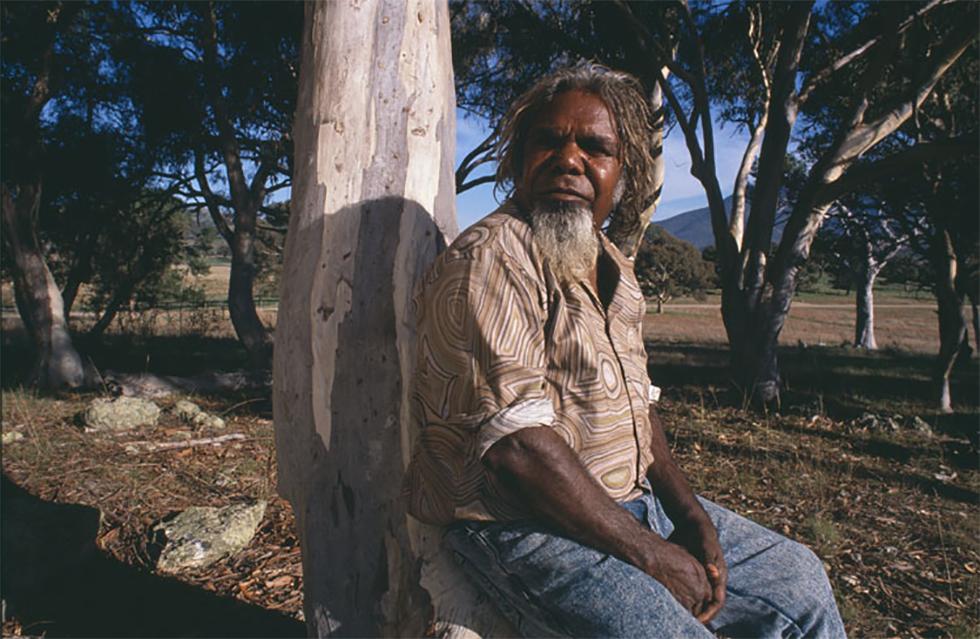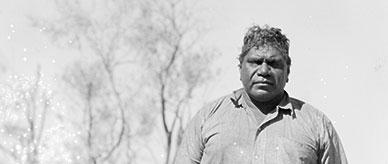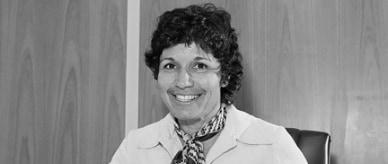


About this record
This colour photograph of Aboriginal artist Jimmy Pike, also known by his Walmajarri name Kurntikujarra, was taken by the Australian Government’s Australian Overseas Information Service in 1990. He was attending an exhibition of his work at the Nolan Gallery at Lanyon in the Australian Capital Territory. In the photograph Pike is leaning against a tree, wearing a shirt featuring one of his own designs. Part of the Lanyon property can be seen behind him.
Educational value
- Jimmy Pike, a Walmajarri man, was born near Japingka in the north of Western Australia. Jimmy Pike’s Walmajarri name was Kurntikujarra and he lived a traditional lifestyle in the Great Sandy Desert until his early teens when he went to live at Cherrabun Station. Pike was among the last of the Walmajarri to leave the desert and go north to the sheep and cattle stations in the river valleys of the Kimberley. The white station owner gave him the name ‘Jimmy Pike’ after the champion jockey who rode Phar Lap.
- Pike was a painter and printmaker who told traditional stories through the use of dual and aerial perspective, bold graphic lines and solid blocks of intense, often fluorescent colour. He later founded a textiles company called Desert Designs.
- Pike developed his unique style while serving time in Fremantle prison, due to his involvement in a tribal murder. Pike used his time in prison to take art classes and develop his signature style, which became internationally acclaimed.
- From 1986 until his sudden death from a heart attack in 2002, Pike divided much of his time between his bush camp on the edge of the Great Sandy Desert and his coastal home in Broome. He created artwork that drew extensively on his life experiences. Portrayed through his artwork are the stories of his people and his knowledge of country, including waterholes, plants and animals, so crucial to survival in the desert.
- From 1986 Pike’s wife Pat Lowe lived with him at his desert camp, where she transcribed traditional stories of the local area and her husband’s childhood recollections—a project which produced a series of books illustrated by Pike with text by Lowe. After his death, Lowe published In the desert: Jimmy Pike as a boy (2007), an account of her husband’s childhood memories.
- Pike’s artistic career was relatively short but intensely productive, with some 50 individual and group exhibitions of his prints, textiles and paintings in the Asia-Pacific, Europe and the United States. Pike challenged stereotypes of Aboriginal art and assumptions that the desert was a bleak and lifeless expanse. His work is held by major national and international collections.
Acknowledgments
Learning resource text © Education Services Australia Limited and the National Archives of Australia 2010.
Related themes
Need help with your research?
Learn how to interpret primary sources, use our collection and more.


